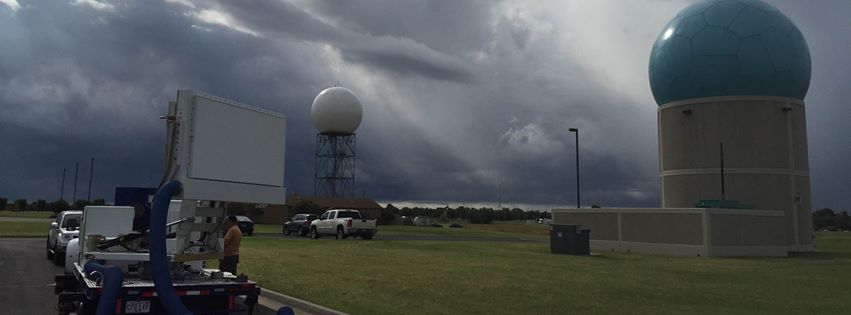 New NOAA awards to fund studies of weather warnings, social media, Internet tools and public response
New NOAA awards to fund studies of weather warnings, social media, Internet tools and public response
How do people sift important weather information out of the incessant buzz of 24/7 social media, text messages, smart phone app alerts, overflowing email inboxes, the blogosphere, and traditional print and broadcast media? Four new research awards funded by NOAA seek to answer this question and to improve the way potentially life-saving weather warnings reach those who need to act on them.
The awards, totaling about $879,000 for four, two-year projects, are being awarded by the Office of Weather and Air Quality in the NOAA Office of Oceanic and Atmospheric Research with funding from the U.S. Weather Research Program and the NOAA National Weather Service.
“These projects apply innovative social science research methods to the immense challenge of communicating crucial weather information in an increasingly complex world,” said Kathryn Sullivan, Ph.D., assistant secretary of commerce for environmental observation and prediction and NOAA deputy administrator. “The results are expected to improve communication within the weather community and motivate appropriate responses from the public when dangerous weather threatens.”
University and nonprofit social science and weather researchers will lead the projects, which support the NOAA Weather-Ready Nation initiative. NOAA experts from the Storm Prediction Center, National Severe Storms Laboratory, weather forecast offices, and river forecast centers will collaborate on them. Award recipients include the Cooperative Institute for Mesoscale Meteorological Studies, the University of Oklahoma, Arizona State University, East Carolina University, the University of North Carolina, and the Nurture Nature Center in Easton, Penn.
Tornadoes and Twitter: A two-year award of $250,000 will fund research on how Twitter messages could be tapped as a source of local weather observations and how Twitter could be used to share weather updates. Carol Silva, Ph.D., associate director of the Center for Applied Social Research at the University of Oklahoma in Norman, Okla., will lead this project. Part of the project will explore the promise and possible pitfalls of using Twitter in severe weather forecasting operations. Another phase of the research will study the nature and content of tweets about severe weather events. In the final phase, researchers will work with the NOAA National Severe Storms Laboratory and the NOAA Storm Prediction Center to assess possible use of Twitter data in detecting and tracking storms, issuing warnings, and assessing damage after a storm.
An inundation of flood data: A two-year award of $160,000 will fund research to develop strategies to improve online flood forecasting tools and to better motivate residents to prepare for floods and respond to flood warnings. Rachel Hogan Carr, director of the Nurture Nature Center of Easton, Penn., will lead the project. The Nurture Nature Center is a non-profit organization that has previously partnered with NOAA and NWS on flood education. The center will partner with the NWS Middle Atlantic River Forecast Center and NWS Weather Forecast Offices in Mt. Holly, N.J., and Binghamton, N.Y., to assess NWS flood forecast and warning tools. The aim is to help NWS understand how people living in the Delaware River Basin use NWS online tools to understand and prepare for flood risk
Deciding to seek shelter: A two-year award of $75,000 will fund research to explore factors that explain why some people rush for shelter when they receive a tornado warning and others do not. Renee McPherson, Ph.D., associate professor of geography and environmental sustainability at the University of Oklahoma (OU), will lead this project. She is a fellow of the Cooperative Institute for Mesoscale Meteorological Studies (CIMMS), a partnership between NOAA and OU. Researchers will identify the factors relevant to an individual’s response to a tornado warning, specifically the NWS polygon warning tool which defines a geographic danger zone. They will collaborate with the NWS Warning Decision Training Branch and the NOAA National Severe Storms Laboratory.
Managing a weather emergency: A two-year award of $394,000 will fund research on how NWS can improve its products and services to feed helpful information into the complex network of people who manage public emergency services. Kenneth Galluppi, director of the Arizona State University Decision Theater, will lead this multi-institution project with Arizona State University, East Carolina University, the University of North Carolina, and CIMMS at the University of Oklahoma. For several years this team has been studying how the emergency management network – managers of public services such as transportation, police and fire units, and utilities – processes weather information. This project will build on earlier studies and will produce recommendations for NWS forecasters.


